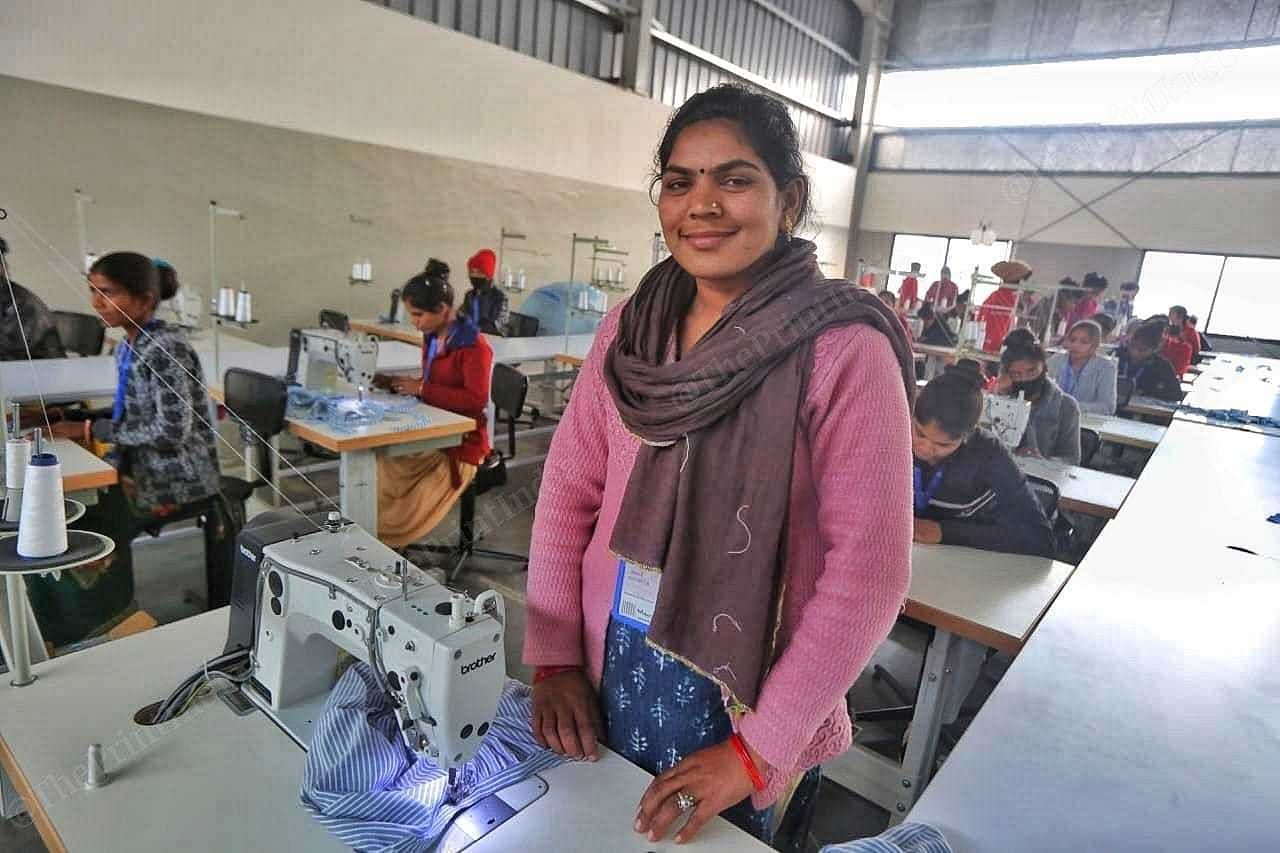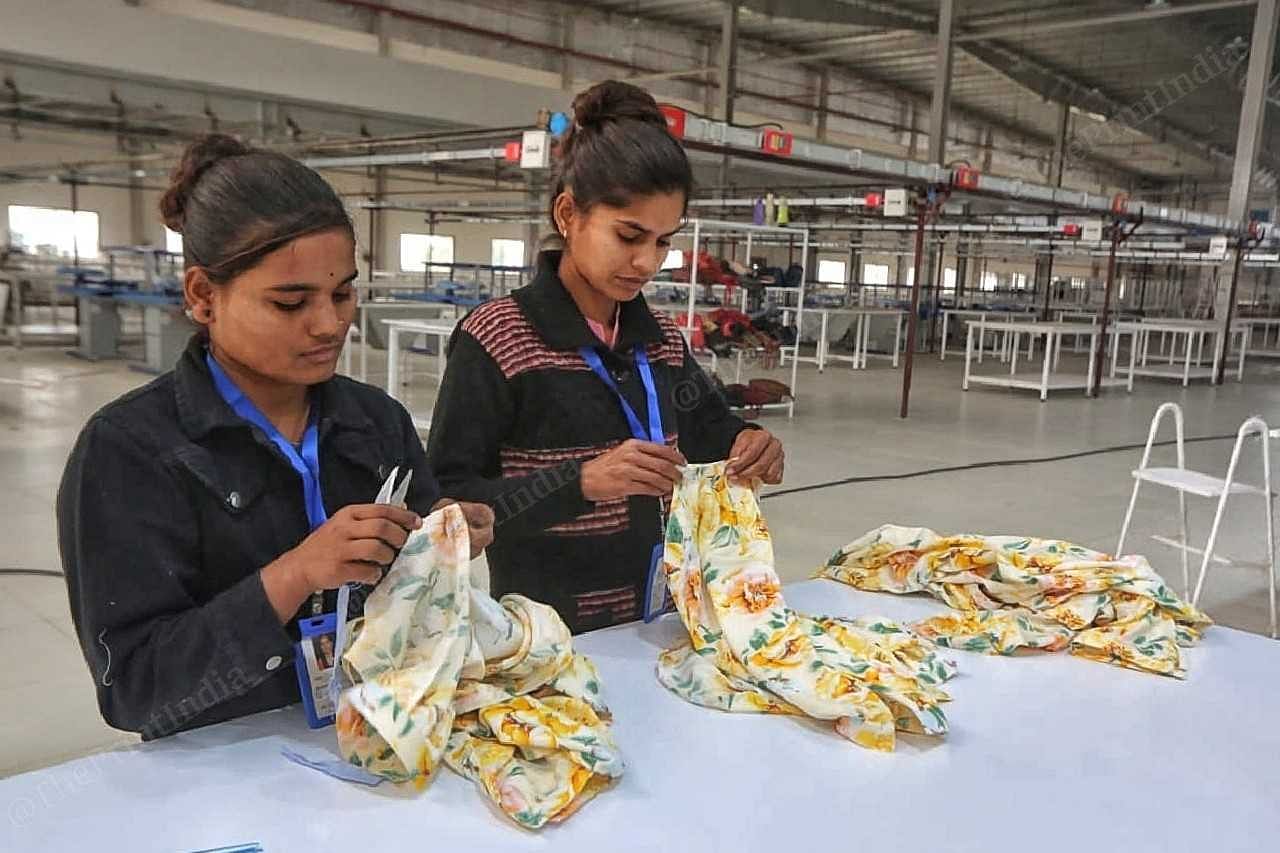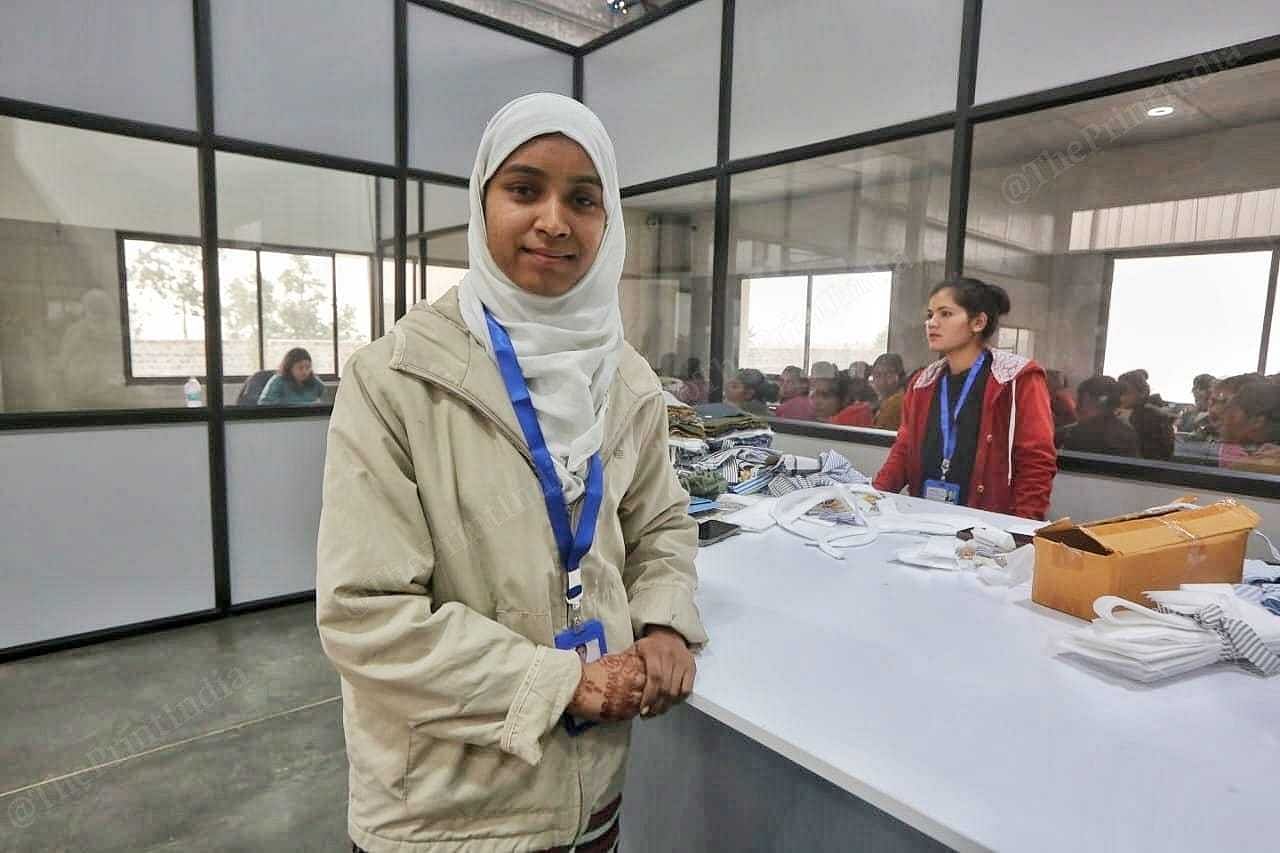IOver 450 women have been learning how to make garments and measure them in the factory at Acharpura near Bhopal. Each one has crossed the threshold between their house and the work place for the first time. The clicking and whirring sounds of the sewing machine drown out any other noise. The women remain focused on their job.
“I kissed my daughter’s forehead and thanked god for giving me this opportunity. It feels that things will now get better in my life,” says 27-year-old Seema while flattening a strip of cloth and rolling the sewing machine into action. She joined the workforce just two months ago, in December 2022, and is still part of the factory’s trainee programme.

In Madhya Pradesh’s industrial village of Acharpura, thousands of women from nearby shanties and villages have discovered financial freedom by working in the state’s nascent but growing garment manufacturing industry. Most have taken up jobs at a new factory run by Bengaluru-based Gokaldas Exports Limited, where Seema works.
Also, read: ‘Not a common tailoring job’—Muslim women in Malerkotla stitch flags for Har Ghar Tiranga
Gokaldas visited Acharpura in the year 2005
Gokaldas is one of India’s largest garment manufacturers and exports to over 50 countries. Chief Minister Shivraj Singh Chuhan attended the opening of its factory at Acharpura, January. promised It would create 5,000 jobs directly and 10,000 indirectly.
Seema, who hails from the nearby Karadi village, earns a minimum wage of around Rs 12,000 a month. It’s more than what she earned as a labourer at a construction site—a job she was forced to take up after her husband’s untimely death due to an illness.
After the Madhya Pradesh State Industrial Development Corporation (Madhya Pradesh State Industrial Development Corporation) leased it to Gokaldas 2021, the factory was up and running in record time.
Once Seema and the other women complete their three-month training programme, operations will begin in full swing.
Also, read: 2020 lockdown: 11% MSMEs closed by women, but only 1% recovered with government assistance, according to a study.
Growing, learning, and earning
At this factory, women are taught how to sew, stitch, iron and wash clothes. There’s a steady hum of activity on the floor: Rolls of fabric are opened and straightened on long tables as giant washing machines rumble in the background. In another corner, a group of women run their fingers along hemlines, looking for loose threads and defects in the clothes.

When necessary, a female supervisor assists trainees.
The textile sector, which accounts for more than two per cent of India’s GDP, is also the second largest provider of employment after agriculture—particularly for women, who constitute 60-80 per cent of its workforce as of 2021. This trend is evident in Acharpura’s factory floor, where 90% of its workers are women.
“These women are from Acharpura and nearby villages. They are unskilled; most are using a sewing machine for the first time. Before the company starts its operations, it is teaching them how to work,” says floor supervisor Himanshi Sharma, who has been in the garment business for four years and hails from Indore.
Also, read: What reports on Indian women’s falling participation in labour force don’t tell you
A beacon of hope and encouragement for women
It may not be 25-year-old Khushnuma Ali’s dream job, but it pays the bills and helps her contribute to household expenses. Despite having a Master’s degree in social work, she could not find a job. In November, after many rejections, she returned home disappointed and a friend informed her of a garment factory opening in the industrial area.

She was there the next day to meet the Indore manager. “I told [Sharma] that I was desperately looking for a job, and that I was ready to produce garments despite my different work experience,” she recalls. Ali was hired quickly, and she joined the factory on 25 December. “I am learning the art of sewing, and I feel confident now,” she said.
The local economy is getting a boost from the garment factory. On the road to the factory, there are new dhabas and small hotels. The mood is buoyant.
“Even the guards and pantry staff are local residents. We will soon begin the second phase. [cutting fabric], which will create at least 2,000 direct jobs,” said the north region’s commercial head, Gopal Nandan.
Asha, 45 years old, is ahead of all the other trainees at the factory wearing a Bengali Saree and big Bindi. Sewing was her passion as a young woman. However, family and children trumped sewing. Her love for sewing faded over time but returned as soon as she heard about the garment factory.
“All I knew was sewing. Now, I can use my skills to make a living. I will make a difference and live my life in my own way. Financial independence is an important step toward equality for women.”
(Edited By Zoya Bhatti